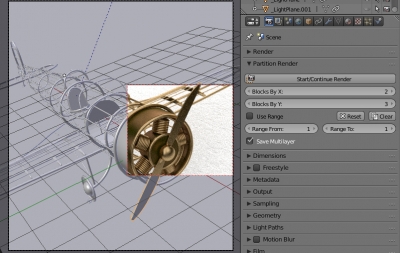2.78b
2.78 release update on blender.org.
Add-on PartitionRender v.0.0.5 update.
If the checkbox is on – temporary render results are saved in OpenEXR Multilayer format including all layers and passes for future use. Only finished image compiles automatically, different passes need to compile manually.

Sometimes it is necessary to add a single modifier to each part of some complex object. The easiest way is to cycle part by part through all the object and add the desired modifier to each its part manually. But if the object consists of many parts, it will take a lot of time.
There are some ways to greatly facilitate this work:
How to copy a single modifier to multiple objectsRead More »
Think for a moment – how many real scenes you created really with using that default cube?

Not much, right? But all the same, each time starting a clear scene, you press: x – delete. Again. And again. Let’s put on white magician gloves and once for all escape this nonsensical action:
For an effective portfolio demonstration, there is a good practice to show together with the color render the clay render to emphasize scene volume, lighting, models topology, as well as, in the case of photo-realistic rendering, showing scene “3D-essence”. The overlaying of these two renders in the same image could be an even more spectacular trick.

Add-on PartitionRender v.0.0.4 update.
Add-on PartitionRender v.0.0.3 update.

Add-on PartitionRender v. 0.0.2 update.
